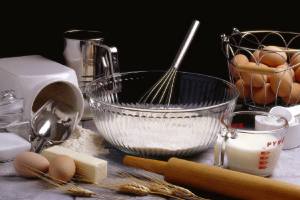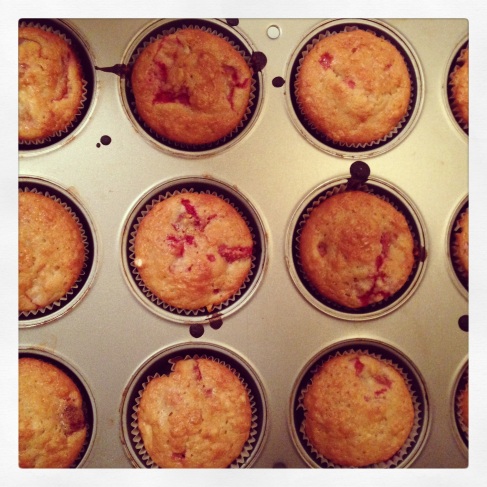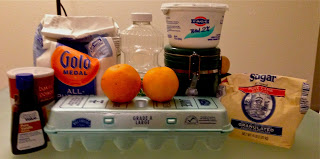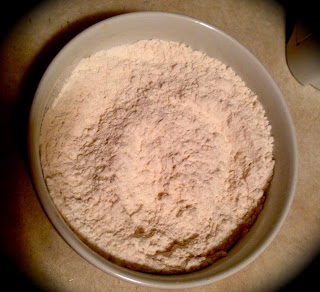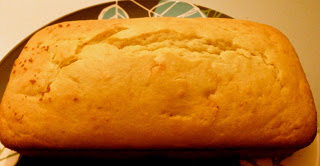One of the conflicts that I face as a nutrition major as well as someone who loves to bake is exactly that….I LOVE TO BAKE!! Although there are definitely “healthier” versions and modifications of your favorite baked goods (which I always opt for), the combination of flour + sugar + fats (oil, butter, etc) is never exactly “ideal”. After taking my food science course last year and learning all of the components of different ingredients, such as oil and sugar, and how they contribute to your resulting product, it’s becoming harder for me to seek out “sugar substitutes” and “fat substitutes” as replacements, because they don’t possess the same characteristics and qualities as that of straight up sugar and fat. And as a perfectionist in the kitchen, I want my products to be as perfect as possible in structure and mouthfeel. (Btw, if you would like a separate post of me talking about the characteristics of sugars and fats and how they are unique in baking and hard to mimic, then let me know). However, there are other options that can be considered to yield a “healthier” product. Three easy examples are to…
1) USE WHOLE WHEAT FLOUR WHEN YOU CAN.
When I make my banana muffins or banana bread, or really anything that uses a significantly sweet fruit, I will usually choose to opt for the whole wheat flour instead of your standard all-purpose flour. Personally, I am accustomed to the taste of wheat because any kind of bagels or bread that I buy in the market are almost always whole-wheat or whole-grain, but I can understand if the taste of wheat isn’t as desirable by some people. If you are one of those people, try making banana muffins with whole wheat flour! Or try mixing the wheat flour with all-purpose flour. I can almost guarantee that you won’t be able to taste the difference, because the texture and sweetness of the ripe bananas almost masks and enhances the wheat flour, in a way. In fact, last year in one of my food classes, a partner and I performed an experiment where we made two versions of banana bread – one made with whole wheat flour and one made with all-purpose flour. The participants almost unanimously voted for the wheat bread! There’s just something about bananas and wheat flour that really compliment each other.
Now, why is whole-wheat flour a healthier alternative to white flour? Well, for starters, the “brown” version of any food is almost always healthier than the “white” version – pasta, rice, grains, bread, etc. In general, whole-wheat flour is higher in nutrients because it is made with the whole kernel of the grain, rather than just the interior endosperm portion (this is also why the color is darker – because it hasn’t been stripped of its outer nutrients). However, the protein content in wheat flours are higher than white flours, so this may cause a problem for those who are gluten-free. But the most notable difference between the two flours is the fiber content – “brown” flours contain almost 4x as much fiber as “white” flours! And on average, women (and most men) don’t receive enough fiber in their diets to begin with, so this is definitely an easy way to implement some fiber into your diet if you’re like me and love to bake 🙂
#2) USE GREEK YOGURT INSTEAD OF SOUR CREAM
Greek yogurt and sour cream are pretty similar in both texture and flavor (if you get the plain, tart flavor of yogurt). However, they are drastically different in nutrient content! To give you an idea, here is a comparison of the content in:
1 C of greek yogurt (nonfat): 130 calories per cup, no fat, 9 g carbohydrates, 9 g sugar and 23 g protein
1 C of sour cream: 445 calories and 45 g of fat but just 5 g protein, 6.5 g carbohydrates and 8 g sugar
As you can see, greek yogurt contains almost 4x as much protein as sour cream, at about 1/4 of the calories! It is also lower in fat and cholesterol, which is always a good thing.
Sour cream is usually used in baking because it yields a dense and very, very moist product. This is typically desirable in certain cakes and cake-breads. But an easy healthier alternative would be to switch out your cup of sour cream for a cup of greek yogurt! It yields a product that is just as moist, at a far better nutrition standard.
#3) USE DIFFERENT MILKS
I have never personally been a fan of cow milk. Before, I would try to drink enough 1% or 2% milk to fulfill my calcium requirements, but since I’m not fond of cow milk, it was pretty difficult to meet adequate calcium intake levels. But a couple of years ago, I discovered one of the greatest substitues – almond milk!! Almond milk is so great… (check out my post for a more in-depth description of why almond milk is better), and it can easily be used as a substitute for milk in baking products! There is no noticeable change in flavor, and you are receiving a much more nutrient-dense product 🙂
